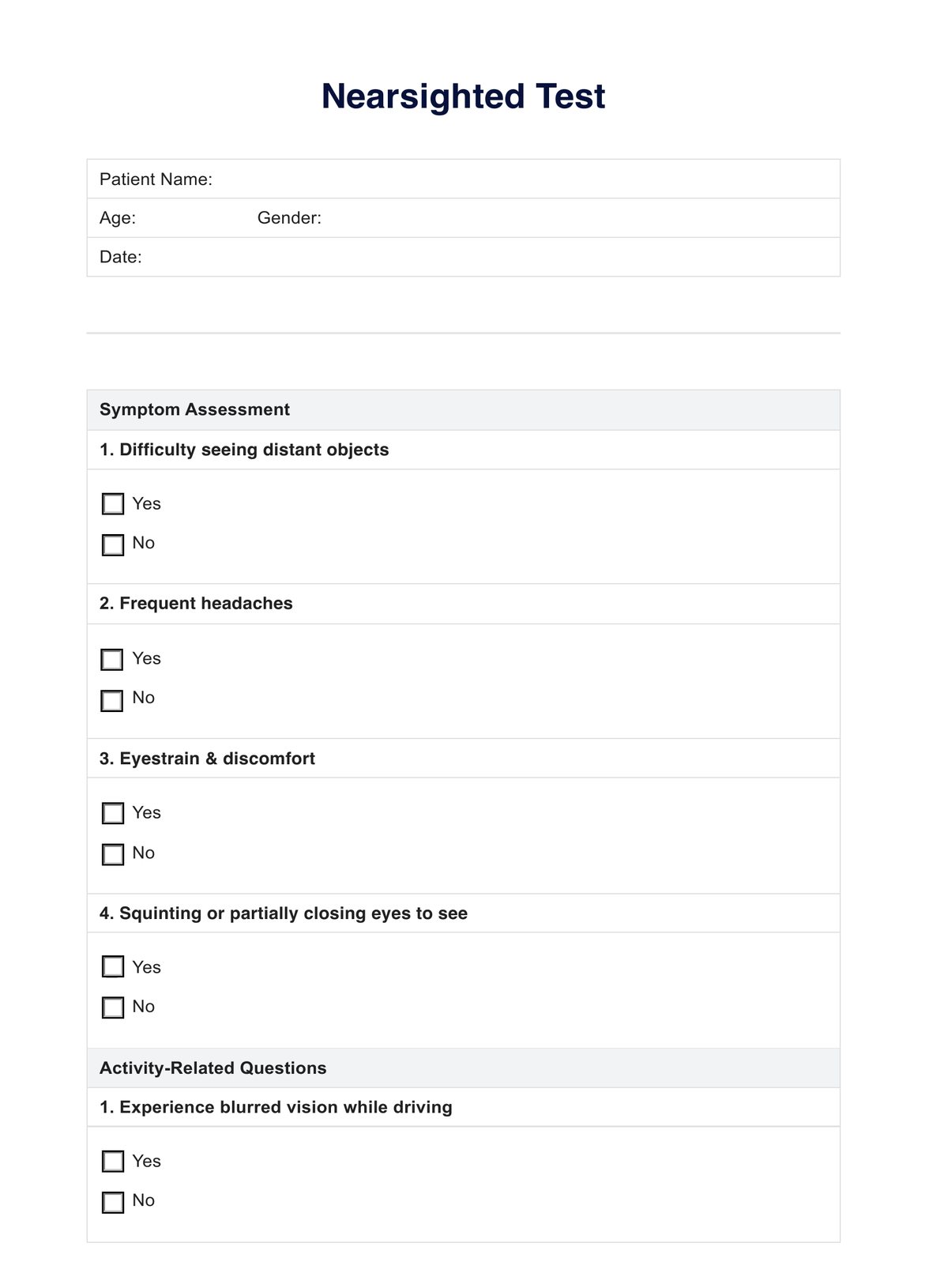Common symptoms of nearsightedness include difficulty seeing distant objects clearly (such as road signs or the blackboard in school), needing to squint to see clearly, headaches caused by eye strain, and difficulty seeing while driving, especially at night (night myopia).

Nearsighted Test
Learn how to conduct a nearsighted test and document the results using this free resource. Access and download the free PDF template here.
Nearsighted Test Template
Commonly asked questions
For those diagnosed with nearsightedness, annual eye examinations are typically recommended to monitor the condition. However, your healthcare provider might suggest more frequent examinations, especially in children, due to their rapid eye development.
Nearsightedness typically does not improve naturally over time. In fact, it often worsens throughout the childhood and teenage years when the body is in a rapid growth phase. Myopia cannot be reversed, but the goal of treatment is to keep it from getting worse, which can protect our eye health in the future.
EHR and practice management software
Get started for free
*No credit card required
Free
$0/usd
Unlimited clients
Telehealth
1GB of storage
Client portal text
Automated billing and online payments











